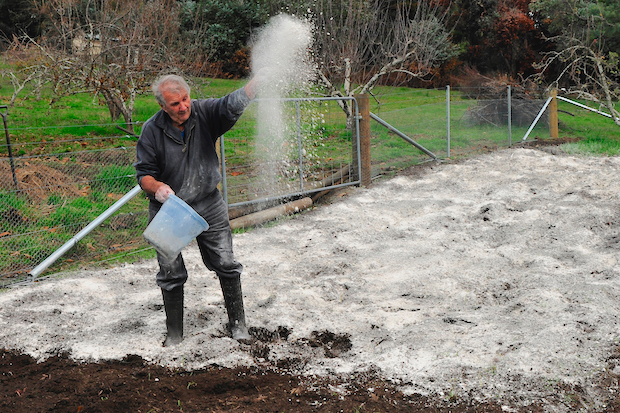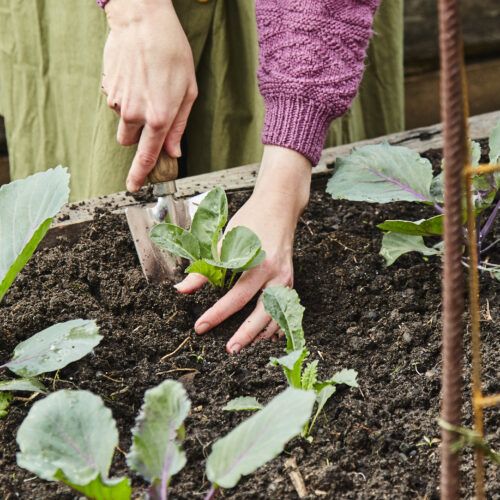It’s elementary
2017-05-29T22:00:00+10:00
Elements and trace elements are essential to plant health, so deficiencies can lead to a wide range of plant problems, writes Peter Cundall.
To be honest, some of us really do talk to plants and we’re not necessarily behaving foolishly. After all, we are usually watering, feeding or checking their health at the same time. But even if the plants can’t talk back, they can certainly communicate any troubles via visual-distress signals such as leaves changing colour, foliage wilting or a sudden flush of tiny fruit. Learning to quickly interpret these signals means we can correct the plant deficiencies before they become serious.
All plants are subject to attacks from living organisms, especially common parasitic pests and diseases. However, some of the most misunderstood plant problems are not caused by living organisms, but by disorders initiated by unsuitable growing sites, impoverished or unbalanced soil, specific nutritional deficiencies or abnormal temperature fluctuations. They include mineral deficiencies, especially in new gardens or where plants are growing in coarse, free-draining, acidic, sandy soils.
Well-established organic gardens have few nutritional problems because the soils are nourished with natural fertilisers, especially animal manures from organic sources, good composts and biochar, most of which contain a balance of major and minor nutrients. It is this enriched organic matter that not only prevents wasteful leaching and nutrient loss, it also encourages a living, thriving underground movement of earthworms, healthy bacteria, moulds and fungi that break down nutrients to make them available to our plants.
Nevertheless, even the best gardens can get out of balance and some plants really do benefit from additional minerals and trace elements.
Nutrient problem solver
Well-established organic gardens have few nutritional problems but if they occur, here’s what to do.
| Nutrient | Signs of deficiency | Solutions in brief. |
| Nitrogen (N) Major nutrient |
Yellowing, starting with oldest leaves. Leaf drop. Stunted growth. Excess flowers and fruit while still young. | Pelletised organic fertilisers, aged chook manure, fish emulsion. |
| Phosphorous (P) Major nutrient |
Dark green or even blue-purple older leaves, sometime red/yellow margins. Burnt tips. | Add bone meal, blood and bone, fish emulsion, aged chicken manure. |
| Potassium (K) Major nutrient |
Yellow purple hues in older leaves, brown edges, spots, scorching. Pale flowers, few fruit. | Flower and fruit organic fertilisers, sulphate of potash, seaweed extract, molasses. Wood ash, aged poultry manure. |
| Calcium (Ca) Major nutrient |
Tip hooking of leaves then darkening of older leaves. Blossom end rot, bitter pit, stunted celery, asparagus. | Lime, especially liquid lime. Dolomite, blood and bone. Well rotted cow and sheep manure. |
| Magnesium (Mg) Major nutrient |
Yellowing between leaf veins, reddish brown tints at edges, but leaf base stays green. Pale blotchy older leaves. |
Epsom salts as foliar spray. Dolomite or Epsom salts to soil. |
| Sulphur (S) Major nutrient |
Youngest leaves yellow with rolled edges, then whole plant yellows. |
Add gypsum or sulphur powder. Also seaweed extract. |
| Boron (B) Micro nutrient |
Youngest leaves have yellow margins, are distorted and narrow. Dead growing tips, hollow fruit, brown patches. |
Add borax powder. Also seaweed extract and aged manure or trace element mix. |
| Copper (Cu) Micro nutrient |
Distorted, yellow growth tips and young leaves. Fewer flowers. | Add copper sulphate (bluestone). Seaweed extract, aged manure or trace element mix. |
| Iron (Fe) Micro nutrient |
Yellowing between dark veins on young leaves. Eventually completely white. | Add organic iron chelates, seaweed emulsion or meal or trace element mix. |
| Manganese (Mn) Micro nutrient |
Yellowing between veins on young and older leaves. Veins pale green rather than dark green. | Add manganese sulphate or chelate. Seaweed extract or trace element mix. |
| Molybdenum (Mo) Micro nutrient |
Mottling, cupping and distortion of old leaves and stems. Whiptail in cauliflower. | Add Sodium molybdate in tiny amounts as found in trace element mix. Add lime to increase pH if soil too acid, decrease alkalinity if too alkaline. |
| Zinc (Zn) Micro nutrient |
Young leaves small and bunched, mottled yellow, white markings between veins. | Add zinc sulphate. Use zinc nails. Seaweed emulsion and aged manure or trace element mix. |
For more on plant deficiencies and how to solve them, get your copy of the May/June issue Organic Gardener magazine OUT NOW!







